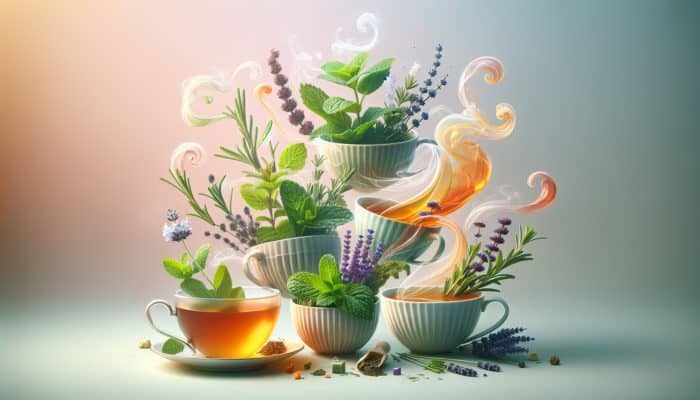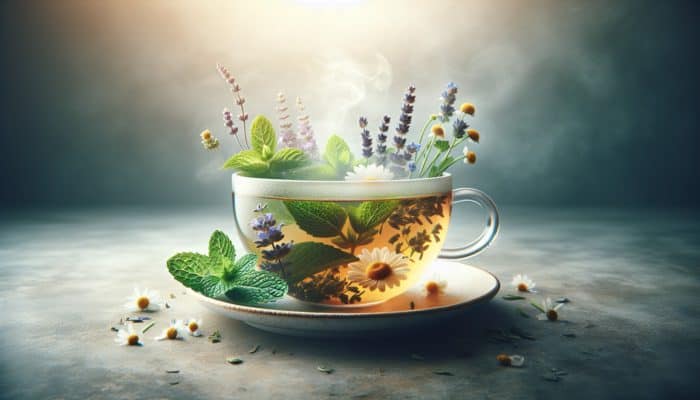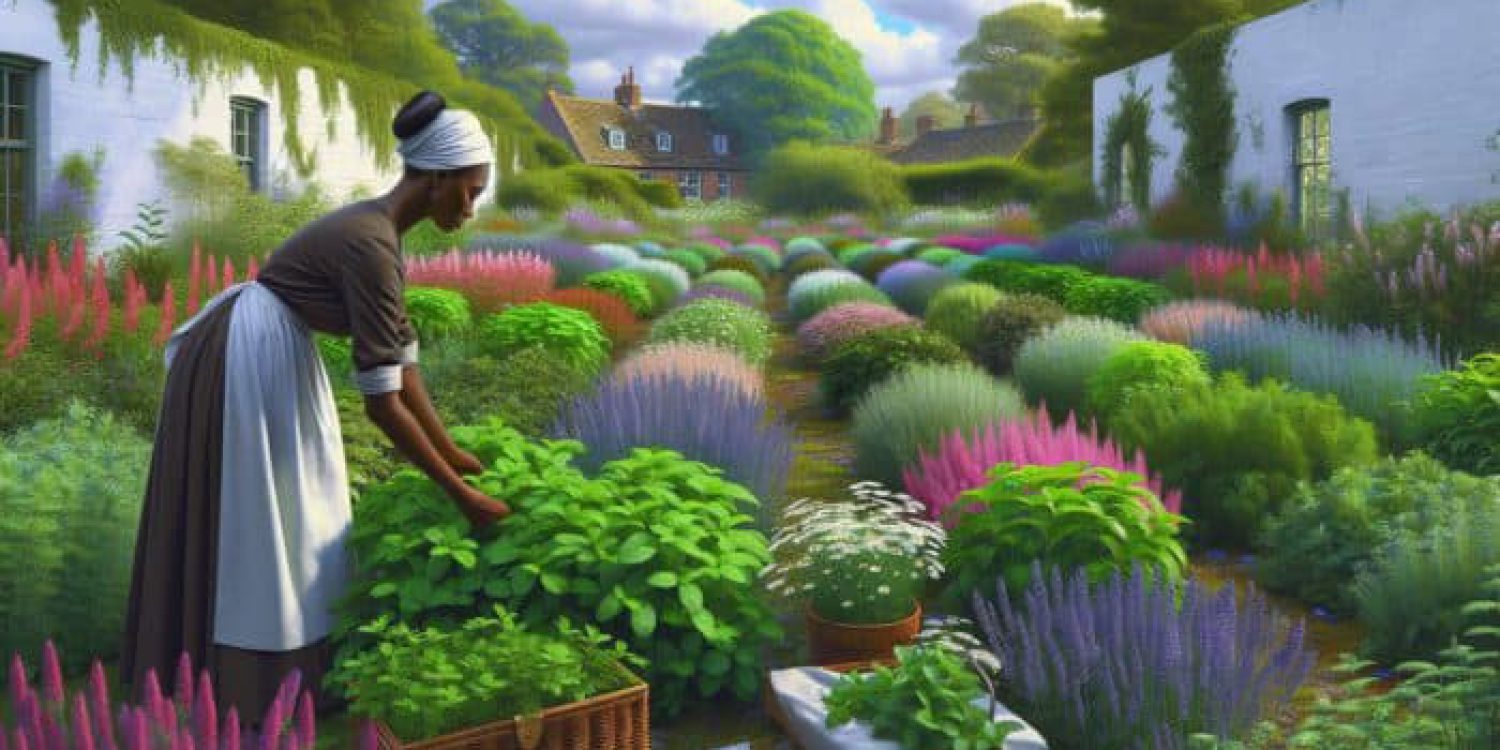Choosing the Right Herbs for Crafting UK Teas
Exploring Popular Herbs in British Tea Blends

How to Blend Herbs for Teas: The realm of herbal tea in the UK is as rich and varied as the nation's culture, featuring an array of herbs that are cherished for their unique flavours and wellness benefits. Mint, in its numerous varieties, stands out as a perennial favourite, celebrated for its invigorating taste and digestive advantages. Chamomile, with its gentle floral scent, is renowned for its calming properties, making it a beloved staple in many homes. Likewise, lavender is adored not only for its enchanting aroma but also for its capacity to foster relaxation and mitigate stress. Other noteworthy herbs include rosemary, which imparts a robust, earthy flavour, and lemongrass, a lively addition that imbues tea blends with a zesty citrus flair.
Beyond these, UK gardens frequently showcase an assortment of herbs such as lemon balm and nettle, each offering distinctive flavours and health benefits. Every herb contributes to a vibrant tapestry of tastes, empowering tea enthusiasts to create blends that reflect their individual preferences and wellness aspirations.
Where to Find Quality Herbs for Your Teas in the UK?
Acquiring top-quality herbs for your tea blends is crucial for enhancing both flavour and health benefits. The UK boasts an abundance of resources, from lively local markets to reputable online retailers. Exploring your local surroundings is a delightful way to uncover fresh herbs. Farmers' markets, such as the iconic Borough Market in London or St. George's Market in Belfast, often feature dedicated stalls showcasing a variety of herbs and plants.
For those who prefer the convenience of online shopping, numerous suppliers specialise in providing both fresh and dried herbs. Some of the leading UK herb suppliers include:
- Herb Garden – A comprehensive selection of herbs and plants.
- Steenbergs – Organic herbs and spices prioritising sustainability.
- JustIngredients – Bulk herbs and spices ideal for blending.
- Herbs Unlimited – Offers a diverse range of both common and rare herbs.
- Wild Herb Company – Specialises in foraged and wild herbs.
- Good Life Herbs – Focuses on fresh herbs for culinary and medicinal purposes.
By sourcing from these reputable suppliers, you can ensure that your tea blends are crafted using the finest ingredients available.
Discovering Seasonal Herbs for Your UK Tea Blends
The charm of blending herbal teas in the UK lies in its seasonal diversity. Each season presents a unique array of herbs that can significantly enhance your tea experience. In the spring and summer months, elderflower emerges as a delightful addition, offering a sweet, floral flavour that harmonises beautifully with citrus. Meanwhile, nettle becomes available in early spring, providing a nutrient-dense herb that can be enjoyed both fresh and dried throughout the year.
As autumn approaches, rosemary and thyme thrive, contributing depth to warming blends that can ward off the chill. Lastly, during the winter months, hibiscus and chamomile can be combined to create a soothing tea that delivers comfort and warmth. Embracing seasonal herbs not only elevates your tea’s flavour profile but also connects you with the natural rhythms of the British landscape.
How to Cultivate Your Own Herbs for Tea in the UK?

Growing your own herbs for tea can be an immensely gratifying and economical endeavour. The temperate climate of the UK supports a variety of herbs that can flourish in home gardens or even on balconies. For novice gardeners, mint is an exceptional choice due to its resilience and rapid growth. It can be cultivated in pots to prevent it from taking over your garden space.
Chamomile is another herb that is relatively easy to cultivate. Sowing its seeds in early spring will yield fragrant blooms by summer. Lavender and rosemary also thrive in the UK, requiring well-drained soil and ample sunlight. To guarantee a consistent supply of herbs, stagger your planting times and harvest regularly, which encourages new growth. By incorporating homegrown herbs into your tea blends, you not only enjoy fresher flavours but also experience the satisfaction of nurturing your own ingredients.
Exploring the Health Benefits of Common UK Tea Herbs
The herbs frequently utilised in UK tea blends are not merely delicious; they are also brimming with health benefits. Chamomile is widely acknowledged for its capacity to promote restful sleep and alleviate anxiety. It contains antioxidants that may assist in combating inflammation and bolstering the immune system. Meanwhile, peppermint, with its refreshing flavour, is excellent for digestion and can help relieve headaches due to its muscle-relaxing properties.
Other herbs, such as ginger, are celebrated for their anti-inflammatory effects and ability to soothe nausea, making them a beneficial addition for those feeling unwell. Moreover, lemongrass can help lower cholesterol levels and possesses antimicrobial properties. Understanding the health benefits of these herbs enables tea enthusiasts in the UK to create blends that not only tantalise the taste buds but also cater to their health requirements.
Insights on Crafting the Perfect Herbal Tea Blends
Real-World Examples of Successful Herbal Tea Blends

Creating the ideal herbal tea blend demands both creativity and an understanding of flavour profiles. One beloved example in the UK is the classic Mint and Chamomile blend, which combines the refreshing nuances of mint with the tranquil essence of chamomile. This harmonious mix typically employs equal parts of both herbs, allowing each flavour to shine through while benefiting from the soothing effects of both.
Another popular blend is Lavender and Lemon Balm, which results in a calming tea that is perfect for stressful days. A suggested ratio may be two parts lavender to one part lemon balm. This combination not only offers delightful floral and citrus notes but also promotes relaxation and mood enhancement.
For those eager to replicate these blends, an actionable step is to start with a foundational ratio of 1:1 for complementary herbs and adjust according to your personal taste. By experimenting with various proportions, you can uncover a myriad of delightful flavour combinations that align with your preferences.
How Can You Experiment with Different Herb Ratios?
Experimenting with herb ratios is a pivotal aspect of creating your unique tea blends. Begin with a fundamental understanding of flavour profiles: some herbs, like mint, can dominate a blend, while others, like chamomile, provide a gentle backdrop. A good practice is to maintain a basic ratio of 1:1 for more prominent herbs, while subtler herbs can be utilised in smaller amounts, such as in a 2:1 or 3:1 ratio.
Here are some effective ratios to experiment with:
- 1:1 – Equal parts for a balanced flavour (e.g., peppermint and chamomile).
- 2:1 – One stronger herb to one subtler herb (e.g., lavender to lemon balm).
- 3:1 – A dominant herb with a hint of another (e.g., ginger to chamomile).
- 1:2 – For an herb that complements and enhances (e.g., mint to rosemary).
Experimenting with these ratios can assist you in identifying your preferred flavour profiles while also tailoring your blends to achieve specific health benefits. Always keep notes on your experiments to refine your technique and discover your ideal blend.
What Are the Unique Health Benefits of Specific Herbs?
Each herb included in UK tea blends carries its own distinct health benefits, making them invaluable not only for their flavours but also for their medicinal properties. For instance, peppermint is particularly recognised for its ability to alleviate digestive issues and relieve headaches, making it a popular choice among many tea drinkers.
Conversely, chamomile is esteemed for its calming effects, frequently recommended as a natural remedy for insomnia and anxiety. Additionally, ginger is noted for its anti-inflammatory properties, making it an excellent option for enhancing the immune system or combating colds. Each herb contributes to a harmonious blend of health benefits, enabling you to create teas that not only taste delightful but also promote wellness.
How to Source the Finest Quality Herbs for Your Tea Blends?
Sourcing the highest quality herbs is essential for crafting a successful tea blend, and there are various paths to explore within the UK. Local markets, such as Covent Garden Market in London, frequently feature vendors offering organic, freshly harvested herbs. When selecting herbs, look for vibrant colours and a potent aroma—these are indicators of freshness and quality.
Online, you can discover suppliers like Herb Garden and Steenbergs, who uphold rigorous sourcing practices. Always take the time to read reviews or obtain recommendations from fellow herbal tea aficionados. Furthermore, when purchasing dried herbs, ensure proper packaging; airtight containers can significantly preserve freshness. By being discerning about where you procure your herbs, you can markedly enhance the quality of your tea blends.
Preparing Your Herbal Tea Blends in the UK
Techniques for Drying and Storing Herbs for Tea
To preserve the potency and flavour of your herbs, employing proper drying and storage techniques is paramount. The humid climate of the UK can affect the longevity of your herbs if not managed correctly. One effective method for drying herbs is to bundle them and hang them upside down in a cool, dark area with good airflow. This process generally takes one to two weeks, depending on the herb's moisture content.
Once your herbs are dried, storing them in airtight containers, such as glass jars or decorative tins, is crucial. Ensure these containers are kept away from direct sunlight and heat, as exposure can diminish the herb's quality over time. For extended storage, consider using vacuum-sealed bags, which can significantly prolong shelf life. By adopting these best practices, your herbs will remain vibrant and flavourful, ready for blending into exquisite teas.
Mastering Blending Techniques for UK Herbs
Mastering the art of blending herbs is essential for creating a well-balanced and flavourful tea. One effective technique is to begin with a base herb that will serve as the predominant flavour, then layer in complementary herbs. For instance, when blending mint with lemongrass, start with a larger proportion of mint, adjusting as per your personal preference.
Another technique involves crushing or grinding herbs using a mortar and pestle. This method releases essential oils and enriches the flavour profile of the blend. When blending dried herbs, it’s advisable to mix them in small batches, allowing you to taste and adjust as needed. Remember to document your ratios and combinations, as this practice will aid in refining your blending techniques over time.
What Equipment Do You Need for Effective Blending?
Creating your own tea blends necessitates some essential tools to ensure precision and quality. A digital scale is invaluable for accurately measuring herbs, enabling you to consistently replicate successful blends. Additionally, a mortar and pestle can be employed to grind and release oils from herbs, enhancing their flavours.
A selection of airtight containers is also vital for storing your blends and preserving their freshness. Consider investing in a variety of jars, as this allows for easy visibility of your creations. Other useful tools include a tea infuser or a fine mesh strainer to brew your blends effectively. Investing in these items can significantly elevate your tea blending experience, ensuring that you create exceptional herbal concoctions.
Sourcing Local Herbs for Your Tea Blends in the UK
Understanding where to locate the best local herbs can greatly enhance your tea blends. In the UK, certain regions are particularly celebrated for their rich herbal offerings. For instance, the picturesque countryside of Kent is renowned for its diverse wild herbs, while the coastal areas of Cornwall provide unique maritime herbs that can add remarkable depth to your blends.
Visiting local farms or herb nurseries can yield fresh and organic options, often available during specific seasons. Additionally, foraging in local parks or nature reserves can reveal a treasure trove of wild herbs, such as nettle or dandelion. Always ensure you have appropriate permissions and that you're knowledgeable about safe foraging practices. By sourcing locally, you not only support your community but also enhance your tea blends with fresh, high-quality ingredients.
Research-Backed Insights on Blending Herbs for Teas
Providing Expert Analysis on the Health Benefits of Herbal Blends
The health benefits linked to herbal tea blends have been substantiated by various scientific studies, underscoring their potential impacts on well-being. For instance, the calming properties of chamomile have been associated with improved sleep quality, demonstrating its efficacy in alleviating insomnia symptoms. Research also suggests that peppermint may aid in relieving digestive discomfort, making it a frequently sought-after choice for those experiencing bloating.
Moreover, studies have highlighted the anti-inflammatory properties of ginger, which can be beneficial for alleviating pain associated with conditions such as arthritis. By thoughtfully blending these herbs, individuals can craft tea infusions tailored to specific health needs, ensuring both enjoyment and wellness in every cup.
How Do Different Herbs Interact in Blends?
Understanding the interactions between various herbs in your blends can significantly enhance both flavour and therapeutic efficacy. Some herbs, like mint and ginger, complement each other exceptionally well, delivering a refreshing yet spicy profile that invigorates the senses. Others, such as chamomile and lavender, create a soothing synergy that promotes relaxation and tranquillity.
Furthermore, the effectiveness of certain herbs can be amplified when combined. For example, blending lemon balm with chamomile can enhance the calming effects, making it an ideal choice for unwinding after a stressful day. Experimenting with these interactions is essential for discovering new blends that not only taste fantastic but also provide holistic health benefits.
What Are the Best Herbs for Targeting Specific Ailments?
Certain herbs have long been recognised for their effectiveness against specific ailments, making them invaluable in crafting targeted tea blends. For instance, ginger is frequently recommended for its ability to alleviate symptoms of colds and flu due to its anti-inflammatory properties. Blending ginger with lemon and honey creates a powerhouse tea for soothing sore throats.
For stress relief, chamomile and lavender are ideal, as both herbs are renowned for their calming properties. A blend that incorporates these with valerian root can further enhance relaxation, making it perfect for consumption before bedtime. Understanding these associations enables tea enthusiasts to create blends that effectively address common ailments while savouring the delightful flavours of herbal tea.
Enjoying Your Custom UK Herbal Tea Blends
Optimal Brewing Techniques for Maximum Flavor
Brewing your herbal tea blends correctly is vital for extracting the fullest flavour and health benefits. Start with freshly boiled water, allowing it to cool slightly before pouring over delicate herbs like chamomile and lavender. A steeping time of 5 to 7 minutes is generally ideal, permitting the flavours to infuse without becoming overly bitter.
For heartier herbs, such as mint or ginger, a longer steeping time of approximately 10 minutes can enhance the flavour. Experimenting with water temperatures and steeping durations can yield varied flavour profiles, allowing for a customised experience. Remember to taste your brew throughout the steeping process to discover the perfect balance that suits your palate.
Pairing Your Herbal Tea Blends with Traditional UK Foods
Pairing your herbal tea blends with food can elevate your culinary experience to new heights. A fresh mint tea, for instance, pairs exquisitely with rich chocolate desserts, providing a refreshing counterpoint that cleanses the palate. Similarly, a calming chamomile blend is an excellent companion for sweet pastries, enhancing their delicate flavours.
For those who enjoy a spicier kick, a ginger and lemon tea can beautifully complement spicy dishes, balancing the heat with soothing warmth. When hosting afternoon tea, consider serving herb-infused blends alongside classic scones or finger sandwiches to create delightful pairings that highlight the flavours of both the tea and the food.
What Are the Rich Cultural Traditions Surrounding Tea Drinking in the UK?
Tea drinking in the UK encompasses a rich tapestry of history and traditions, from the iconic afternoon tea to the simple ritual of a morning cuppa. Afternoon tea, introduced by Anna, Duchess of Bedford, in the 19th century, has evolved into a delightful social event, often featuring a selection of herbal teas alongside dainty sandwiches and scones.
Beyond this, herbal teas have been utilised for medicinal purposes for centuries, with numerous families passing down their cherished blends and recipes through generations. Today, tea drinking remains a treasured tradition, with countless tea parties, tastings, and workshops held throughout the UK, celebrating both classic and innovative herbal blends.
Exploring the Seasonal Variety of Herbal Teas in the UK
As the seasons transition, so too do the varieties of herbal teas available in the UK. In spring, the arrival of fresh elderflower heralds opportunities to create light, floral blends perfect for warm afternoons. Summer presents a bounty of refreshing mint teas, ideal for hydrating during hot days.
As autumn approaches, the rich, warming flavours of rosemary and thyme can provide comfort against the chill, while winter calls for hearty blends like ginger and cinnamon to warm you from the inside out. Crafting seasonal blends allows tea drinkers to embrace the changing flavours of the UK, enhancing both the enjoyment of tea and a connection to the seasons.
Recognising the Health Benefits of UK Herbal Tea Blends
The health benefits associated with UK herbal tea blends can be profound. For instance, blends that include peppermint are known to aid digestion, while chamomile is often recommended for its calming properties, helping to reduce anxiety and promote better sleep. Incorporating a variety of herbs in your tea blends ensures a comprehensive approach to wellness.
Additionally, many herbal teas can serve as natural remedies for common ailments, such as using ginger for its anti-inflammatory benefits or hibiscus for lowering blood pressure. By understanding the health benefits of specific herbs, tea enthusiasts can create blends tailored not only for flavour but also for their specific health needs, thereby promoting overall well-being.
Sharing and Gifting Your Unique UK Tea Blends
Creative Packaging Ideas for Your Tea Blends
When it comes to sharing your homemade tea blends, presentation is crucial. Thoughtful packaging not only serves a practical function but also adds an element of charm to your gift. Consider using clear glass jars adorned with rustic labels that detail the blend's ingredients and potential health benefits, allowing the recipient to appreciate the thoughtfulness behind the gift.
Alternatively, decorative tins can provide a delightful means of packaging your blends, offering protection against moisture while presenting a stylish appearance. Adding personal touches, such as a handwritten note or a small guide on brewing techniques, can demonstrate your care and make the gift even more special. Thoughtful packaging and presentation transform your herbal tea blends into memorable gifts that can be cherished.
How Can You Personalise Tea Blends for Your Loved Ones?
Personalising tea blends for friends and family can infuse your gifts with greater meaning. Start by considering the recipient's preferences and any health needs they may have. For example, if someone enjoys calming teas, a blend of chamomile and lavender might be perfect. If they seek a refreshing pick-me-up, a mint and ginger combination could be ideal.
When crafting your blend, consider incorporating a variety of flavours and health benefits to cater to their unique tastes. Including a small note explaining the benefits of each herb can enhance their experience and showcase your thoughtfulness. By tailoring your herbal tea blends to the individual, you create a truly unique gift that resonates deeply with the recipient.
Building a Community Around UK Herbal Tea Blending
Creating or joining a community centred around herbal tea blending can enrich your experience and broaden your knowledge. Consider seeking out local herbal tea groups or workshops that focus on blending techniques and the benefits of specific herbs. Online forums and social media groups can also provide a platform to share recipes, discuss favourite blends, and exchange valuable tips.
Engaging with fellow enthusiasts not only deepens your understanding of herbal teas but also fosters connections with others who share your passion. These communities often host events where members can showcase their creations, participate in tastings, and share knowledge. Being part of such a community can inspire experimentation and creativity, allowing you to expand your horizons in the fascinating world of herbal tea blending.
Frequently Asked Questions
Which herbs are most effective for relaxation in tea blends?
Herbs like chamomile, lavender, and lemon balm are excellent choices for relaxation-focused tea blends due to their calming properties.
Is it acceptable to use dried herbs in my tea blends?
Absolutely! Dried herbs are perfect for tea blending, as they retain their flavour and health benefits when stored correctly.
What is the ideal steeping time for herbal teas?
Steeping times can vary, but typically, herbal teas should be steeped for 5 to 10 minutes to extract optimal flavour and benefits.
What health benefits can I expect from drinking herbal tea?
Herbal teas can offer a variety of health benefits, including improved digestion, relaxation, enhanced immunity, and relief from symptoms like colds and stress.
How can I grow my own herbs for tea at home?
Growing your herbs requires a sunny spot, well-drained soil, and regular watering. Begin with easy-to-grow herbs like mint, chamomile, and lavender.
Are there any potential side effects of herbal teas?
While herbal teas are generally safe, some herbs may interact with medications or trigger allergies. It's advisable to consult a healthcare provider if you are uncertain.
Can I combine various herbs in my tea blends?
Yes, mixing different herbs can lead to unique flavour profiles and enhanced health benefits. Experimentation is essential in discovering combinations you enjoy.
Where can I find high-quality herbs for tea in the UK?
High-quality herbs can be sourced from local markets, herb shops, and online suppliers like Herb Garden and Steenbergs, offering both fresh and dried options.
When is the best time to harvest herbs for tea?
The ideal time to harvest herbs is usually in the morning after the dew has dried but before the heat of the day, ensuring maximum flavour and essential oils.
How should I store my herbal tea blends?
Store your herbal tea blends in airtight containers away from sunlight and moisture to preserve their flavour and potency for extended periods.
























3 Comments
It’s fascinating to see how the simple act of tea blending can connect us with nature and reflect the cultural fabric of the UK. I’ve been on a bit of a herbal tea journey myself lately, and I must say, experimenting with different herbs has opened up a whole new world of flavors and aromas that I never knew existed.
Your exploration of herbal teas within the context of UK culture beautifully reflects not only the diversity of flavours but also the historical significance of these herbs in our daily lives. It takes me back to my own experiences of experimenting with different blends in my kitchen. I vividly remember sipping a homemade chamomile and lavender infusion on a particularly stressful evening; the soothing properties were remarkably effective and turned an ordinary moment into a cherished memory.
This is such a delightful exploration of herbal blends! I always find it fascinating how deeply intertwined our cultural practices are with nature’s offerings. Mint, for instance, has such versatility—not only does it elevate the flavour of teas, but it also brings me back to childhood summer days spent in my grandmother’s garden, where fresh mint was often picked for our afternoon brews.